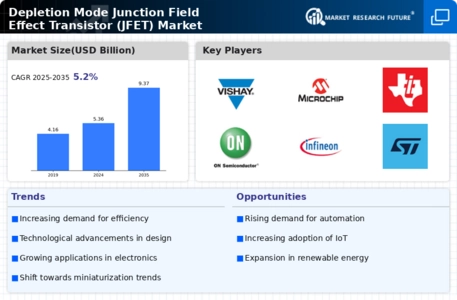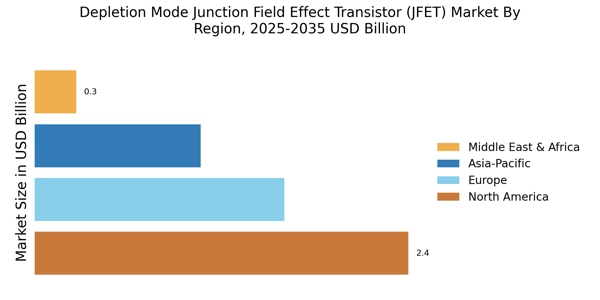Depletion Mode Junction Field Effect Transistor Market Summary
As per MRFR analysis, the Depletion Mode Junction Field Effect Transistor Market (JFET) Market Size was estimated at 5.359 USD Billion in 2024. The Depletion Mode Junction Field Effect Transistor Market (JFET) industry is projected to grow from 5.638 USD Billion in 2025 to 9.379 USD Billion by 2035, exhibiting a compound annual growth rate (CAGR) of 5.22 during the forecast period 2025 - 2035.
Key Market Trends & Highlights
The Depletion Mode Junction Field Effect Transistor Market (JFET) Market is poised for growth driven by technological advancements and increasing energy efficiency demands.
- North America remains the largest market for Depletion Mode JFETs, driven by robust technological infrastructure.
- The Asia-Pacific region is emerging as the fastest-growing market, fueled by rapid industrialization and innovation.
- N-Channel JFETs dominate the market, while P-Channel JFETs are witnessing the fastest growth due to their applications in modern electronics.
- Technological advancements in electronics and the growing demand for energy efficiency are key drivers propelling market expansion.
Market Size & Forecast
| 2024 Market Size | 5.359 (USD Billion) |
| 2035 Market Size | 9.379 (USD Billion) |
| CAGR (2025 - 2035) | 5.22% |
Major Players
Texas Instruments (US), NXP Semiconductors (NL), Infineon Technologies (DE), ON Semiconductor (US), STMicroelectronics (CH), Renesas Electronics (JP), Microchip Technology (US), Analog Devices (US)















Leave a Comment